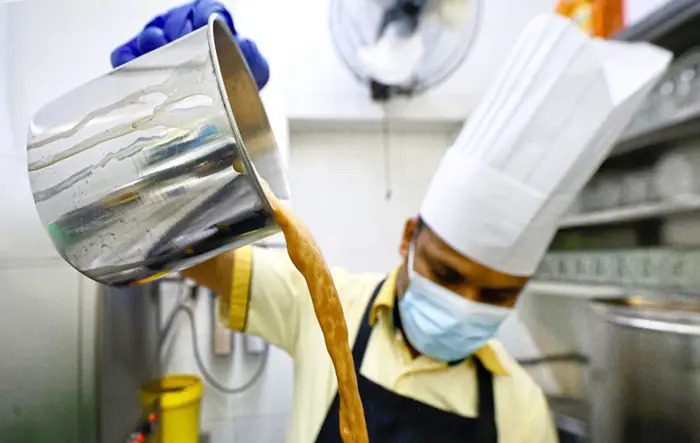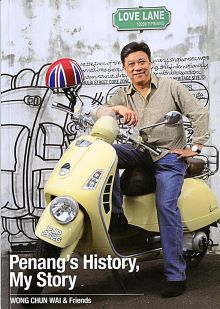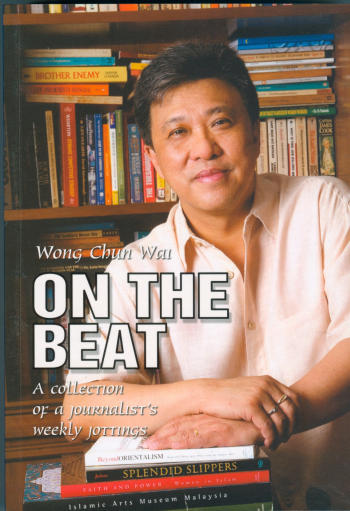
Dangerous for the waistline: For many Malaysian men, the main sweet loving they are getting is from the sugary drinks and delicious local food. — FAIHAN GHANI/The Star
MOST Malaysian men, adult, older and reasonably better off, must have read with interest and great amusement a report that listed Malaysia as having the third largest number of sugar daddies in Asia.
Malaysia, it seems, has 32,000 sugar daddies – we’re tied with Japan. India tops the list with a whopping 338,000 sugar daddies while Indonesia came in second with 60,250.
As with many postings on social media, one should never take such claims too seriously.
Sugar daddies, of course, refer to wealthy older men who provide gifts and money to younger girls (sometimes boys) in exchange for companionship or sexual favours.
If I am not mistaken, this is the second time this news has gone viral. The survey was said to be carried out by a media company in 10 countries in Asia.
As expected, no one knows the methodology, margin of error, and number of respondents but no one cares in the wild, wild, world of social media. It’s the heading and clicks that matter.
It was also not surprising that Singapore portal 8days.sg put up a follow-up with the heading “Singapore Did Not Make It onto List of Top 10 Asian Countries With Most Sugar Daddies’.’
I am not sure if there was a tinge of regret in the report on Feb 9, which said, almost sadly: “Singapore, however, did not make the cut”.
“While the methodology of the survey was never revealed, netizens suggest that the data had been pulled based on where the users live.
“We can’t help but wonder if this means our population is just too small in comparison or maybe, just maybe, Singaporeans are just not into sugar daddy-baby relationships.
“Though seasia.stats claimed the survey was done by Seeking.com, previously knowing as Seeking Arrangement, the dating site subsequently clarified with 8days.sg that they ‘have not released any statistical data on numbers in Asia’.’’
So we don’t really know if Malaysia has that many sugar daddies. What we know for certain, however, is that we have the highest number of diabetic cases in Asia. Malaysia is in the top five in the world. And we can assume the figures would include many wealthy older men.
It has been reported that Malaysia has the highest rate of diabetes in the Western Pacific region and one of the highest in the world, with approximately one in five adults reporting high sugar readings.
An article by Monash University on Nov 14, 2024, said diabetes in Malaysia was at an epidemic level and described it as alarming. “More than 11% of Malaysians have pre-diabetes, a condition characterised by an elevated blood glucose level.’’
So there you go. Older Malaysian men have bigger sugar problems to worry about.
We are definitely very sweet people, but we also blame the Bangladeshis and Indians at mamak restaurants who continue to bring us sweet, sweet teh tarik despite our continuous instructions for less sugar. “Kurang manis, ya, bang!”
It has now risen to become a serious situation that warrants the attention of the National Security Council. The authorities need to even investigate possible elements of sabotage against Malaysians, with sugar used as a weapon.
Malaysian women are under attack in a different way. It seems Pakistani men are now marrying them, especially the Kelantanese women who are renowned for being attractive.
Kelantan Immigration Department director Mohamed Yusoff Khan was quoted as saying the data is based on the number of applications for Social Visit (Long Term) Passes by foreigners.
So where have all the Kelantanese men gone? Off to Thailand, according to Mohamed Yusoff, to marry Thai women.
We may be the Chair of Asean but this is taking neighbourly love a little too far.
Then there is another ridiculous news report, which was also started on social media and unnecessarily picked up by the mainstream media, which claimed that Kuala Lumpur was the most dangerous city in South-East Asia, and fifth most dangerous in Asia.
This is, apparently, according to Numbeo’s Crime Index 2025. Again, no one knows the criteria for such measurements, which is seriously damaging to Kuala Lumpur and the other cities mentioned. None of the Malaysian media took the trouble to challenge or question the index.
Klang was listed as a dangerous town. It may not be the cleanest nor the best organised but crime-infested? I don’t think so. I am sure there are far worse townships elsewhere.
But Klang certainly is dangerous – for the waistline. The food is dangerously good, especially its famed bak kut teh.
Just about anyone can come up with any claims or surveys on social media and create news out of it. Perceptions and opinions from crowd-based data seem to have become prevalent now.
Malaysians who travel frequently can tell you that Kuala Lumpur is far, far safer than London or Paris where your chances of getting robbed or pick-pocketed are higher.
This would include having your phones snatched or your bags stolen in London’s Underground or in shops.
There is also indifference by the cops or shop security guards there. They often take a “you should have known better’’ attitude, which shouts “you deserve it’’ as you share your frustrations with them.
Then there is the Notting Hill Carnival, an annual Caribbean festival in London where people get beaten up or even killed almost every year. The record of the police in ensuring safety at the parade is pathetic.
Really, we all must learn to be cautious with such social media reports. Take them with a pinch of salt. No sugar, of course.





